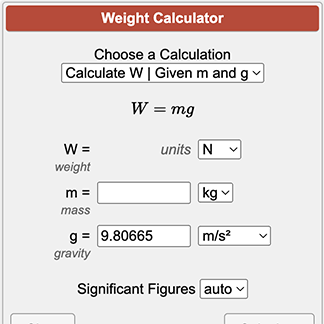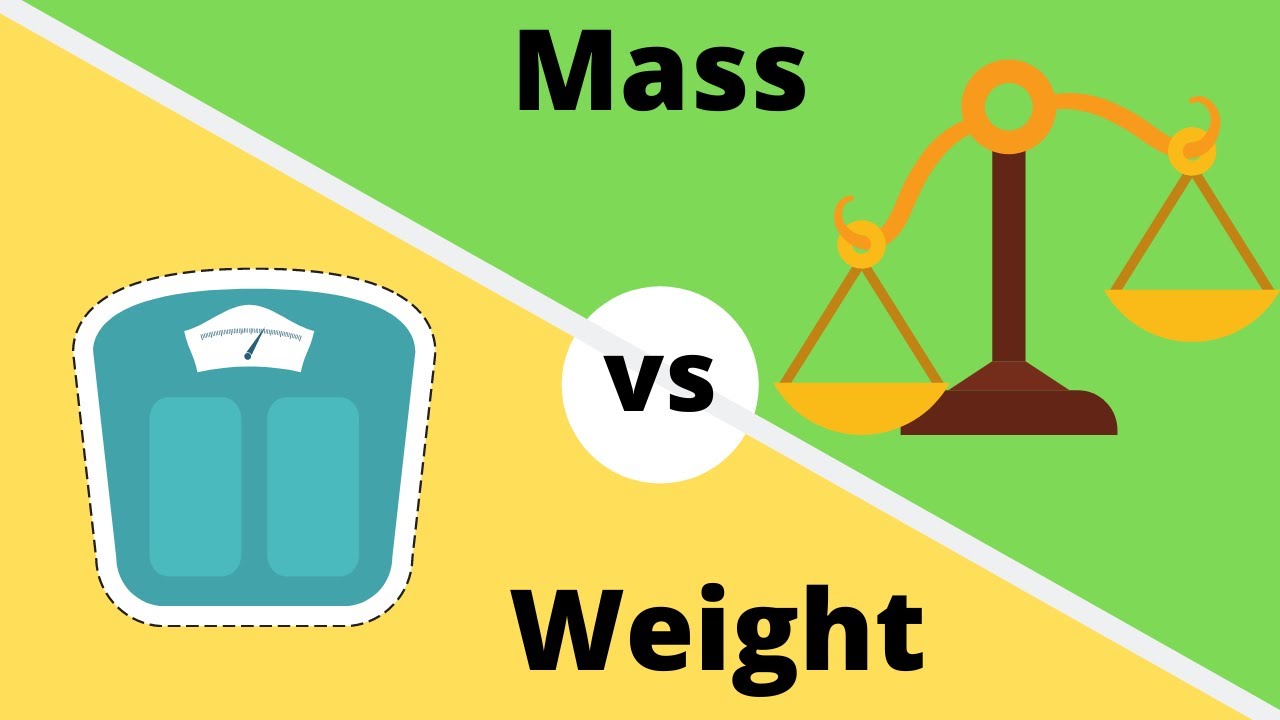Weight Converter
The Weight Converter tool allows you to convert between different units of weight, such as kilograms, pounds, grams, and more, providing accurate and instant results. This tool is perfect for chefs, fitness enthusiasts, students, and anyone who needs to convert weight measurements for various applications. The process is simple and efficient, ensuring precise conversions every time.
Share on Social Media:
Effortless Weight Conversion: Master Different Units with Our Weight Converter
Struggling with weight conversions? Our weight converter helps you instantly transform units like kilograms, pounds, and ounces, ensuring you get accurate results every time. In the following guide, discover how to use this tool to your advantage in various contexts such as cooking, health, and trade.
Key Takeaways
Weight conversion is essential in daily life and involves units like kilograms, ounces, pounds, and stones, with tools like weight conversion charts and online converters simplifying the process.
The metric system is decimal-based for ease of use, with kilograms as the base unit of mass, while the Imperial system includes pounds, ounces, and stones, commonly used in the United States and the UK respectively.
Online weight converters facilitate efficient unit conversion, making tasks like converting pounds to kilograms or kilograms to grams straightforward and precise, important for global trade and various professional and personal activities.
Understanding Weight Conversion

Several key units dominate the world of weight conversion:
kilograms
ounces
pounds
stones
These are the most commonly used units in everyday life, from weighing groceries in a supermarket to calculating body weight at the gym. They form the backbone of any standard weight conversion chart, a tool that simplifies the process of converting units by providing a reference for quick comparisons.
The beauty of a weight conversion chart lies in its simplicity and efficiency. Imagine needing to convert a recipe from kilograms to ounces, or from pounds to stones. Without a chart or a tool, it would be a tedious process of calculating each unit separately. But with a conversion chart, the same task becomes a breeze. Just a glance, and you have your conversions ready, allowing you to focus on the task at hand.
Metric System Mastery
The metric system, with its simplicity and ease of use, is predominant in the realm of weight units. The metric system is a decimal-based system, meaning it uses powers of 10. This makes conversions within the system incredibly straightforward. The base units of weight in the metric system are the kilogram and the gram.
A kilogram, abbreviated as ‘kg’, is the cornerstone of the metric system. It’s the base unit of mass in the International System of Units (SI), the modern form of the metric system. One gram, on the other hand, is equivalent to one thousandth of a kilogram. To convert kilograms to grams, you can easily do so by multiplying the number of kilograms by 1000. This simple calculation will give you the equivalent weight in grams.
Imperial System Insights
Despite the worldwide use of the metric system, the British Imperial system maintains its significance, particularly in the United States. The pound, denoted by ‘lb’, is one of the most recognized Imperial weight units. Its origins can be traced back to the Roman unit of weight known as ‘libra’, which is the reason for its abbreviation ‘lb’.
Today, a pound is legally fixed at a value of 0.45359237 kilograms, establishing a global standard for this Imperial unit of weight. The Imperial system also includes other common units such as the ounce, stone, and ton. These units are frequently used in everyday measurements. An ounce is defined as exactly 1/16 of a pound, ensuring consistency across measurements.
From Stones to Tons
Another intriguing unit of weight is the stone. Mainly used in the UK and Ireland for body weight, a stone is standardized at 14 pounds or 6.35029318 kilograms.
When converting kilograms to stones, you can do so by dividing the value by approximately 6.35. This will give you the equivalent weight in stones. While this unit might seem unfamiliar to those outside the UK and Ireland, it’s widely used within these regions, especially when it comes to measuring body weight or smaller items.
The Digital Scale: Using a Weight Converter

Online weight converters have made weight conversion a seamless process in the digital age. These tools are designed to facilitate the conversion of weight units efficiently. With an online weight converter, you can quickly convert from grams to kilograms, pounds to grams, and kilograms to tons, among other units.
The process is simple. You select the original weight unit, input the number to convert, and click ‘Convert’. Voila! You get the results in the desired units. These conversion tools are based on established mathematical relationships, such as 1 gram being equivalent to 0.001 kilograms, guaranteeing consistent and accurate results.
Convert Pounds with Precision
Now, let’s examine the precision required to convert pounds. If you want an accurate conversion of pounds to kilograms, just divide the weight in pounds by 2.2046226218.
For a quicker estimation, you can divide pounds by approximately 2.2. However, online weight converters simplify this process by just requiring the user to input the pound value. They offer precise conversions and may even provide additional functionalities like history tracking and unit suggestions.
Kilograms to Grams and Beyond
Converting kilograms to grams is another fundamental aspect of weight conversion. It’s quite straightforward: 1 kilogram equals 1000 grams.
Digital converters automate this multiplication, simplifying the conversion process. So, to convert kg from kilograms to grams using a digital converter, you simply multiply the number of kilograms by 1000. This conversion is particularly useful for accurately weighing lighter objects and ingredients.
Body Weight: Understanding Your Mass Units
Understanding your mass units is vital for monitoring body weight. For accurate weight tracking, measurements should consistently be taken at the same time of day, preferably in the mornings after using the restroom.
Also, using the same scale for measurements helps in monitoring true weight changes, minimizing discrepancies due to the variance between different scales. Modern scales can even provide additional metrics such as body fat percentage and muscle mass, offering more detailed insights into body composition.
Effective weight loss monitoring includes setting attainable targets like a gradual reduction of 1-2 pounds per week and tracking these changes using different methods such as nutrition apps and exercise plans.
Regularly weighing oneself can encourage long-term behavioral changes, with consistency being essential for proper tracking of weight management.
Muscle Gain Metrics
Measuring muscle mass and tracking muscle growth is a key aspect of fitness. Body scans such as bioelectric impedance, dual-energy x-ray absorptiometry (DXA), and magnetic resonance imaging can precisely measure muscle mass, with DXA being a commonly used standard.
However, regular measurements of body part circumferences with a measuring tape can also help track muscle growth, though this method does not differentiate between muscle, fat, and bone. Another popular method is determining one rep max (1RM) to measure strength levels and track gains when tested periodically.
Weight Loss Wisdom
Weight loss is a journey that requires accurate tracking and setting realistic goals. Limiting calorie intake and increasing physical activity are key components in accurately measuring and assessing health and fitness with respect to body weight.
When tracking muscle gain, it’s important to remember that muscle mass may weigh more than body fat, which can influence overall weight change and possibly disguise fat loss. Therefore, effective weight tracking for muscle gain requires setting realistic goals, such as increasing protein intake or altering exercise intensity, to see measurable progress in fitness goals.
The Global Language of Weight
Global trade is silently facilitated by weight conversion. It ensures that products are correctly labeled, packaged, and transported, which is vital for seamless global trade.
Standardizing weight conversion across regions with different measurement systems is crucial. It allows for the exchange and comparison of goods in global trade. Without it, the market could easily become a chaotic battleground of inconsistent measurements and inaccurate pricing.
It’s clear that weight conversion plays a critical role in ensuring consistent and accurate measurement of goods across international borders.
Metric Tons vs. Other Units
Metric tons hold a pivotal role in international commerce. They standardize accurate pricing, shipping, and logistics across regions and measurement systems.
A metric ton, also known as a tonne, is defined as 1,000 kilograms or roughly 2,204 pounds. The British long ton, on the other hand, amounts to 2,240 pounds or 1,016.0469 kilograms. Despite the 1.6% weight difference, metric tons and British long tons are often used interchangeably in international trade for practical purposes.
Troy Ounces in Detail
Unlike common weight units, troy ounces are predominantly used for weighing precious metals such as:
gold
platinum
palladium
silver
One troy ounce is defined as containing 480 grains, or 31.1034768 grams, which is heavier than the avoirdupois ounce used in everyday measurements.
The precise weight of a troy ounce is used as the standard for weighing and determining the price of precious metals in trade. The troy ounce has its historical roots in the French town of Troyes and was integral to the British coinage system, showcasing its longstanding significance in trade and commerce.
Weight Conversion Tools and Techniques

Weight conversion tools have become indispensable in today’s digital age. They offer the ability to easily convert between different units, making it easier than ever to measure weight accurately, whether it’s for cooking, shipping, or scientific calculations.
Creating a personal weight conversion table allows for quick reference to frequently used conversions, tailored to individual specific needs. It’s like having a custom-made tool at your fingertips, ready to be used whenever you need it. However, keeping it accurate requires regular updates and checks against reliable sources or updated digital converters.
When choosing digital converters, users should prioritize features such as ease of use, a range of units that cover their specific needs, and the accuracy of conversions provided. Some advanced tools even interface with other digital devices, allowing for seamless connectivity and improved functionality.
Crafting Custom Conversion Charts
The process of creating a custom weight conversion chart can be rewarding. It starts by selecting the desired measurement units relevant to your requirements and finding the conversion factors for those specific weight units. Conversion charts can be tailored to include a specific number of units and values that align with individual preferences and situational needs.
Utilizing a calculator tool to input specific values for the chosen weight units can generate real-time results that will be used in the custom conversion chart. Once all the necessary conversion factors are gathered, they can be organized into a table format, creating an easy-to-reference personalized weight conversion chart.
Selecting the Right Weight Calculator

The right digital weight converter can be a game-changer. A user-friendly online weight converter should allow for easy selection between measurement units such as metric or imperial, and cater to a wide variety of weight inputs.
An effective weight calculator needs to support a range of different weight units and systems. It should also provide instant results, which is crucial for tasks where precision is important. For added versatility, digital weight converters which can perform calculations and interface with other digital devices are a great choice.
The Physics of Weight: Force vs. Mass

Weight and mass are not the same in the realm of physics. Mass is a measure of the amount of matter in an object, and it stays consistent everywhere, unlike weight which changes with gravitational force.
Weight is scientifically defined as the force of gravity acting on an object’s mass. This means that your weight on the moon would be much less than your weight on earth because the moon’s gravity is less than the earth’s. This difference in weight due to varying gravitational forces at different locations is why an astronaut can jump higher on the moon than on earth.
Mass Units Explained
Physical measurements heavily rely on mass units. In the metric system, mass is traditionally measured in kilograms, which is a standard unit agreed upon by scientists worldwide.
The kilogram is defined as the mass of the International Prototype of the Kilogram (IPK). It is a platinum-iridium alloy cylinder stored at the International Bureau of Weights and Measures in France. No matter where you are in the universe, a kilogram of mass remains a kilogram.
Is Weight a Force?
Is weight a force? Yes, it certainly is. Weight is considered a force because it results from gravity acting on an object’s mass. It’s a force that pulls you towards the center of the earth. Without it, we would all be floating around!.
Weight Converter by PagesTools.com
PagesTools.com simplifies all the weight conversions discussed by providing a handy weight converter, a free online tool for editing and analysis. It can convert weight among various formats including:
ounce
gram
kilogram
carat
grain
milligram
pennyweight
pound
stone
slug
metric ton
long ton
short ton
This makes it a comprehensive solution for all your weight conversion needs.
Summary
We’ve journeyed through the world of weight conversion, from understanding basic units in the metric and imperial systems to the importance of weight conversion in global trade. We’ve seen how weight conversion tools can simplify the process and make life easier. And we’ve delved into the physics of weight and mass, demystifying the difference between these commonly confused terms.
Understanding weight conversion is not just about numbers and units; it’s about making sense of the world around us. Whether you’re cooking a new recipe, planning a trip, or working out, weight conversion is part of the equation. So, why not master it? You never know when it will come in handy!
Frequently Asked Questions
What are the basic units of weight in the metric system?
The basic units of weight in the metric system are the kilogram and the gram. These units are widely used for measuring weight in the metric system.
How can I convert pounds to kilograms?
To convert pounds to kilograms, simply divide the weight in pounds by 2.2046226218 or use a quick estimate by dividing pounds by approximately 2.2. This should help you make the conversion accurately.
What is a troy ounce?
A troy ounce is a unit used for weighing precious metals like gold, platinum, palladium, and silver, and it is heavier than the avoirdupois ounce used in everyday measurements.
Is weight a force?
Yes, weight is considered a force because it results from gravity acting on an object's mass.
How can I create a custom weight conversion chart?
To create a custom weight conversion chart, select the measurement units, find the conversion factors, and organize them into a table format. It's important to tailor the chart to your specific requirements.